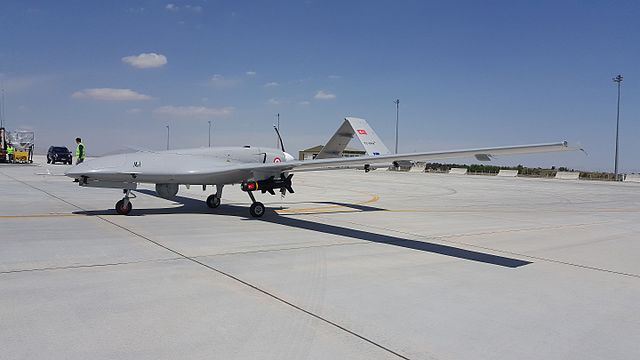What Strikes in Russian Territory Mean for the Russia-Ukraine War

Drones like the Bayraktar TB2, pictured above, have been utilized by the
Ukrainian armed forces during the war.
Jonah Carlson - Ukraine’s drone attack targeting two Russian air bases early this December raised the stakes of the ongoing conflict as it approaches its tenth month. An article published collectively by the New York Times explores the effects of the strikes and how the war at large will be affected.
To understand the gravity of recent events, one needs to understand territory. States claim sovereignty – that is, the right to self-rule – over certain stretches of territory, whether that be land or sea. This territory is demarcated on maps and across the geography itself to create boundaries between states; think the boundary between the U.S. and Canada or, more topically, the boundary between Russia and Ukraine. For the last nine months of the conflict, fighting has been mostly contained to within the boundaries of Ukraine with few exceptions. While U.S. officials have previously shown interest in keeping the conflict within Ukraine’s territory, the recent strikes have shown a complete shift in Ukrainian strategy, as well as an irreverence for keeping the conflict near Ukraine: the two bases hit, Ryazan and Engels, are deep within Russia territory, hundreds of miles from the boundary with Ukraine. The base in Ryazan in fact lies closer to Moscow than the boundary with Ukraine, sitting a mere 100 miles from the Russian capital. These actions are likely to encourage Russian fear and thus aggression towards Ukraine. President Vladimir Putin has previously threatened the use of nuclear weapons in retaliation to Ukrainian aggression; while the nuclear threat remains low, the willingness of Ukrainian forces to attack so deep into Russian territory could significantly expand the territorial extent of the conflict, threatening the use of more arms and the stability of more civilians.
Such expansion may require a complete rewriting of the West’s geopolitical codes regarding Russia. Currently, Western Europe and North America – mostly members of NATO – have situated themselves as a supplier of Ukrainian arms, but not as major geographic players in the conflict. As the conflict shows few signs of stopping and could potentially expand, allies of Ukraine will need to reconsider the depth of their support in order to keep pace with any territorial spread.
Photo distributed under Creative Commons Attribution-Share Alike 4.0. Image source.

